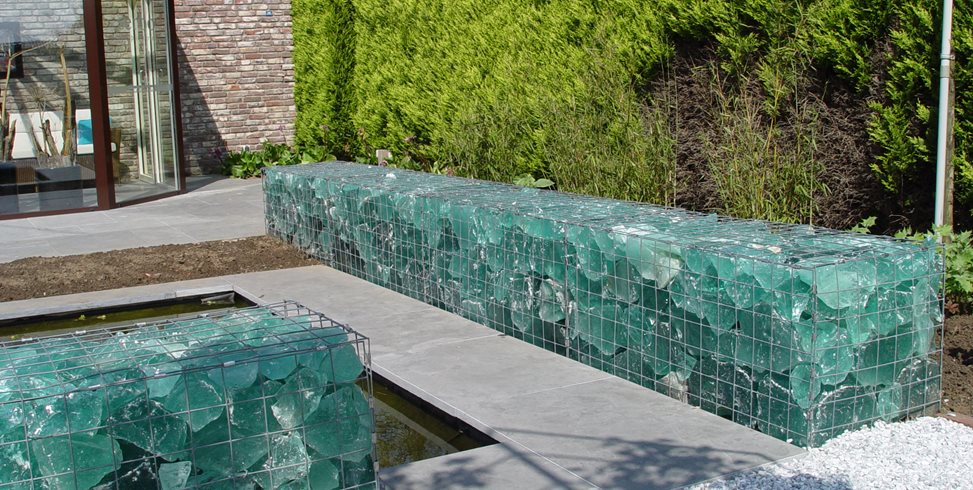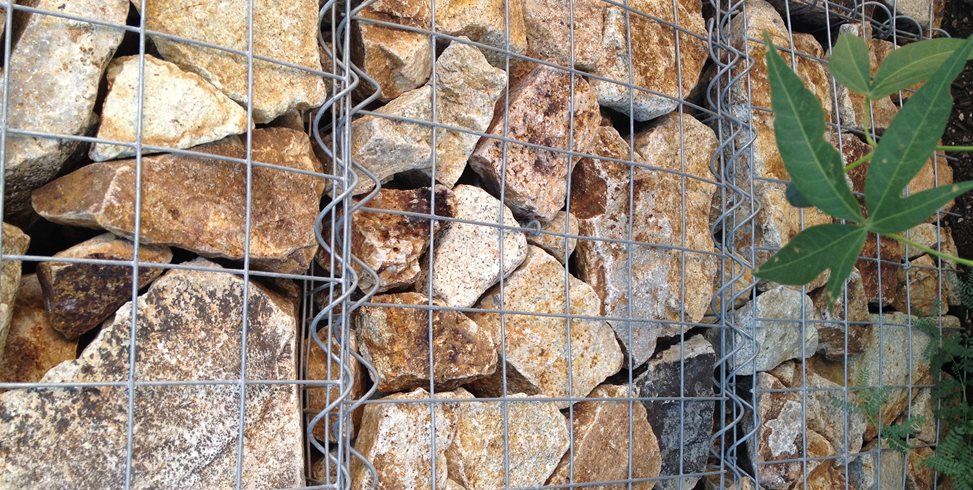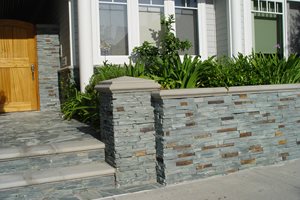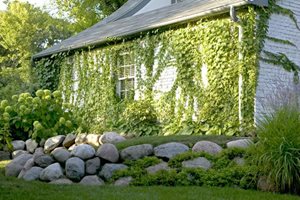Gabion Retaining Walls
Design ideas for using gabion walls to retain a slopeGabion is a very ancient system of wall building. This curious name is derived from the Italian for "cage" which describes the primary structure of the wall. The cage is constructed of wire or wire mesh filled with rock or rubble, which requires no special masonry or skilled labor.
Originally cages were made of woven willow wattle, which is more like a giant basket. These were created in ancient military situations up to the Civil War where field structures were required to protect soldiers or artillery. Gabion walls are experiencing a comeback today as a green alternative that utilizes crushed recycled concrete and other waste material instead of rock.
Structurally gabion walls are different, which allows them to be created in virtually any alignment due to the flexibility of the materials. Originally they came to be used as retaining walls in association with waterways, and they can be highly valuable to coastal and riverside homes today. Where there is risk of high water, the gabion wall acts to hold banks and soil layers with a single, somewhat flexible mass of great weight. Unlike block or concrete, which is a solid structure, a gabion retaining wall can move with the earth to retain its integrity despite the ravages of fast moving water. These are far less prone to undermining, and widely used in bank and shore protection.
Recycled concrete makes gabion retaining walls a green solution to bank erosion. Their weakness is in the longevity of the wire basket which may eventually rust away under the right conditions. Newer wire technology, coatings and other materials are extending the life of gabion structures considerably.
A gabion retaining wall is at first a more porous structure through which runoff can travel rather than being forced around to the end of a solid wall. Over time soil particles work their way into the gaps between pieces of rubble making them more solid with every year. The buildup of soil in surface gaps makes them excellent for landscapes because they can support plant life. Older gabions can host a whole community of native plant volunteers that find the elevated locations ideal alternatives to cliff-face nooks and crannies. Over time a gabion left to colonization can virtually disappear in a natural plant community.
Gabions can also be designed with ornamental plants to create a living retaining wall that is less oppressive looking than block or concrete. Plant roots can help the wall hold together decades into the future as they bind together the stones and may one day hold it in place. However, there will be sedimentation due to the water passing through early in the life of the gabion. This problem often eliminates them as an option for residential applications.
Gabion retaining walls are engineered in steps, or in a long flexible sloping shape, with all exhibiting a pronounced batter. This takes a great deal of ground plane to accommodate the bottom tier, which limits their use on spatially challenged sites. Where there is space, this is a more affordable solution, particularly when recycled or locally originated fill is used. In fact, gabion walls can be a perfect match to local landscape boulders to create a more visually integrated design.

 Backyards
Backyards
 Front Yards
Front Yards








